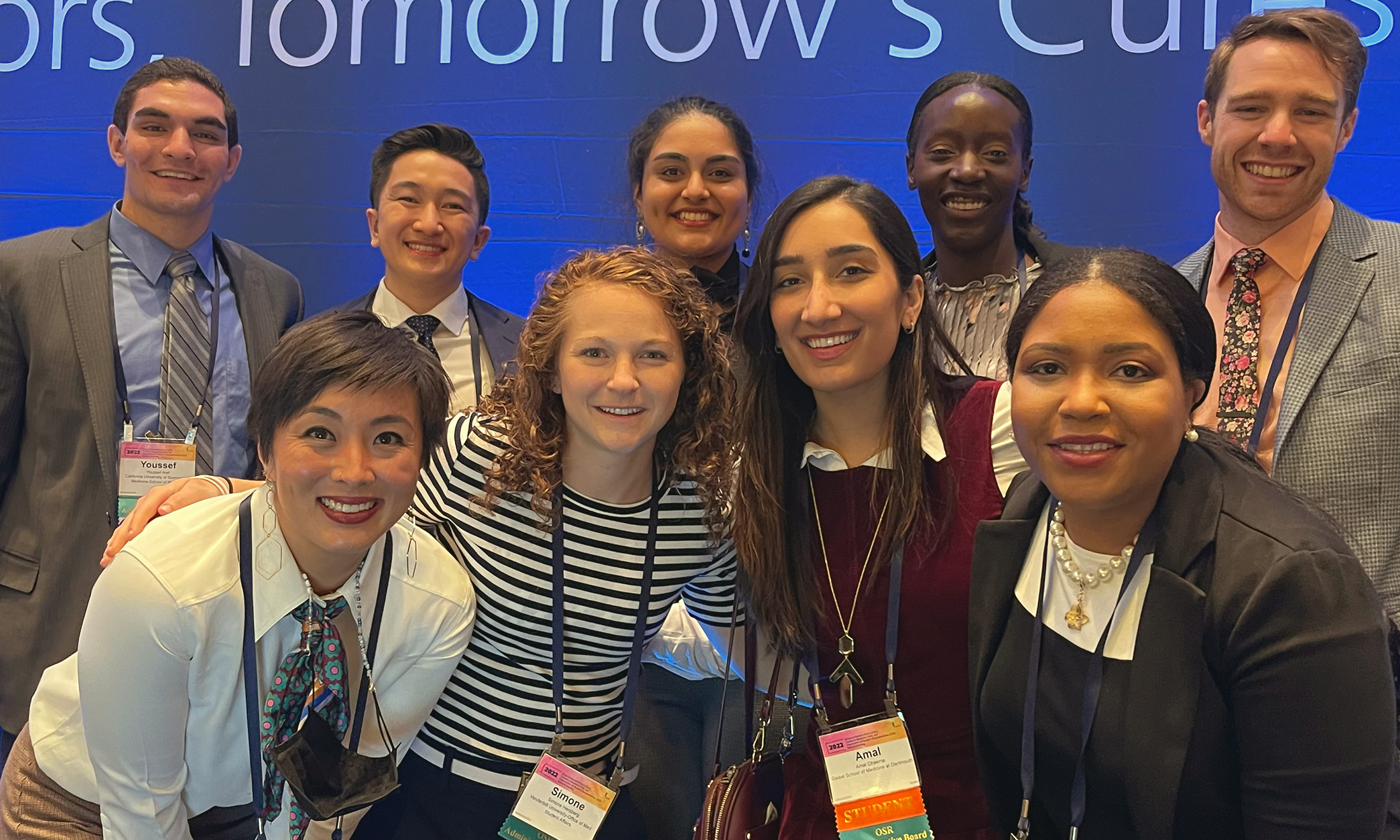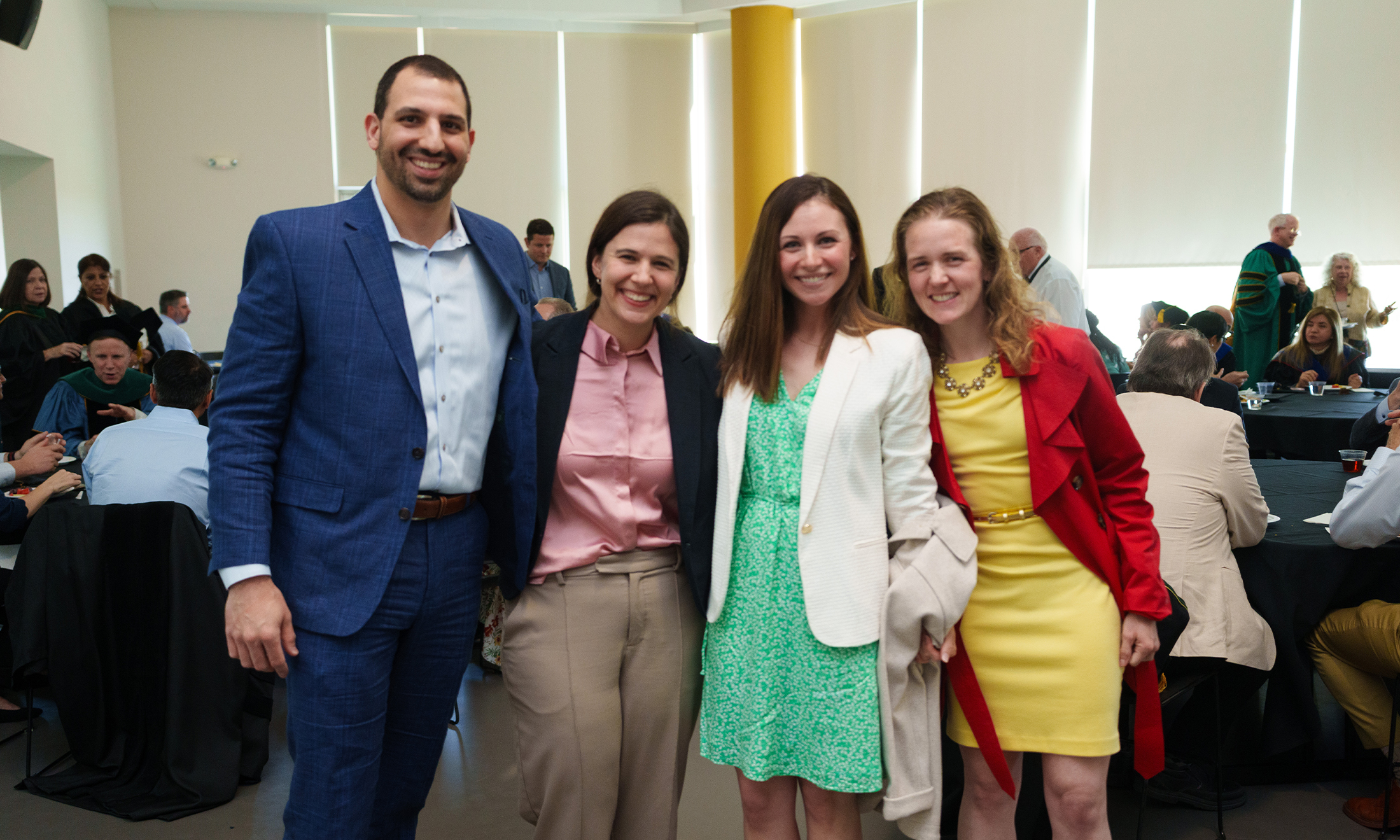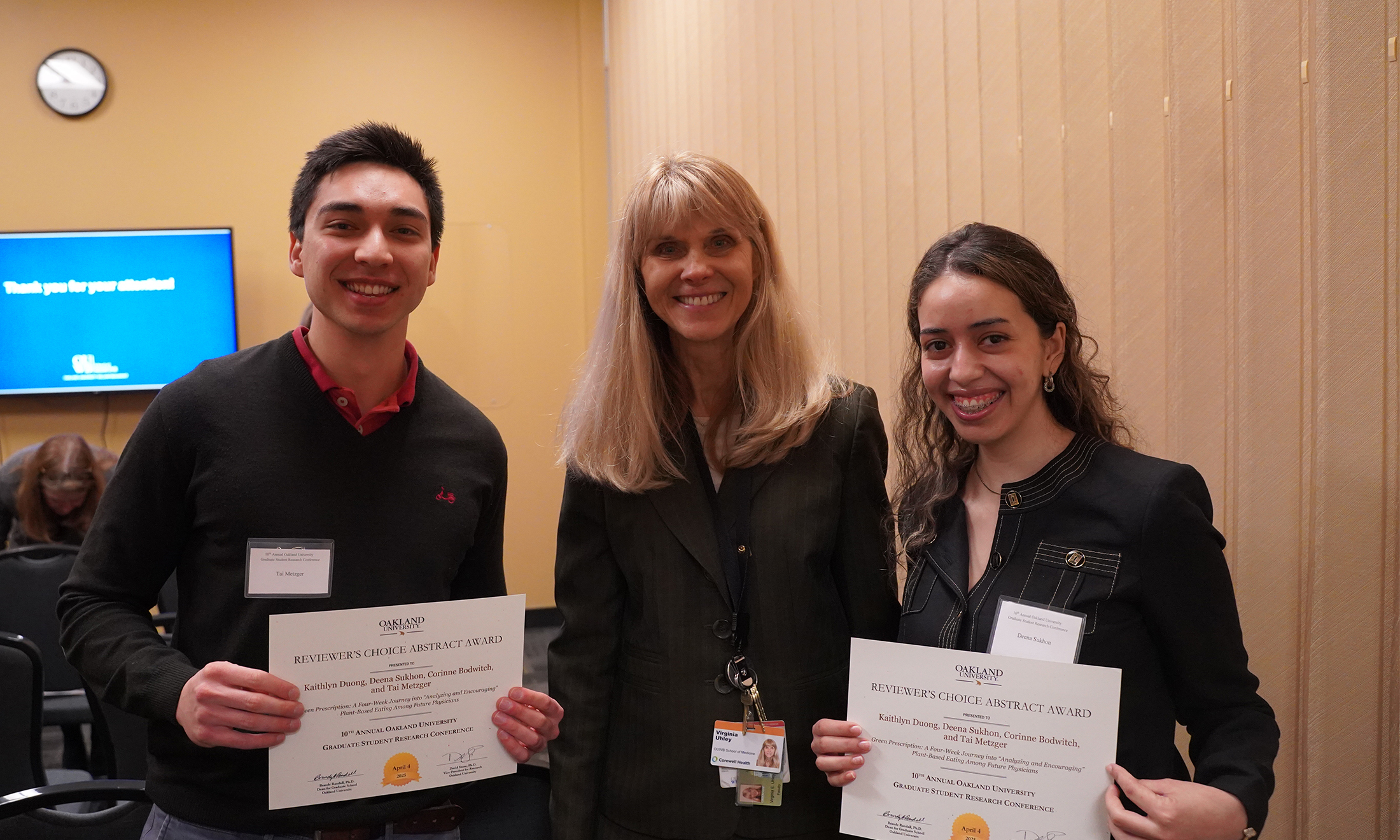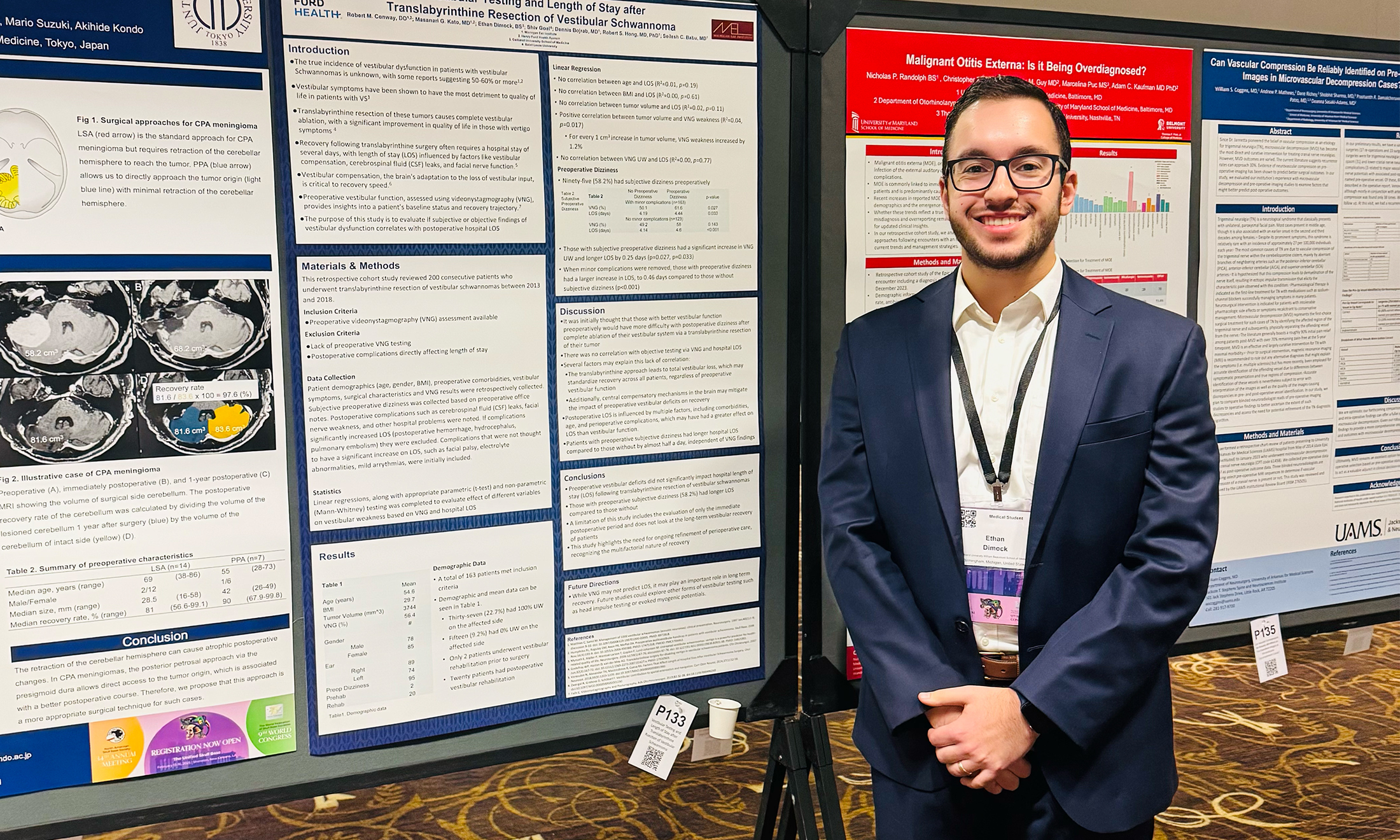Pathoma, Sketchy, Question Banks, oh my!
Study by OUWB students finds heavy use of supplemental learning tools
Third-party resources are used by most medical students to supplement preclinical learning, according to a study led by two OUWB students that also suggests such material would be “well-received” if “formally integrated” into the OUWB curriculum.
“Use of third-party resources to supplement pre-clinical education: a single institution experience” is the title of a poster based on research by Ryan Ko and Nicholas Ludka, both M3s.
The research recently was presented at the Association of American Medical Colleges 2022 Group of Student Affairs, Careers in Medicine, Organization of Student Representatives National Meeting in Denver.
The study found that 97% of OUWB students who responded to a survey supplement learning with the use of third-party resources such as Pathoma, Boards & Beyond, and Sketchy. The study suggests the resources “would be well-received as a formally integrated supplement to non-redundant, in-house lectures.”
“A lot of people are using these (third-party) resources…they’ve become somewhat standardized for the common U.S. medical student,” says Ko. “We’re just shining a light on what are some of the best resources for students…and Student Affairs can take it from there.”
Berkley Browne, Ph.D., associate dean, Student Affairs, was the sponsor of the study.
Overall, she says it’s useful to have such insight into what supplemental resources are being used by students.
“Insight not only for those of us who are doing student support or academic support work, but (for) some of our faculty…if course directors and other faculty have insight into resources students are using, can that be useful for informing how some courses are designed?” says Browne.
Use is ‘notably growing’
The third-party resources in question generally are marketed as aids to help students perform better on board exams. Ko says that historically, most medical students have used third-party resources on their own, and to supplement material presented by faculty, whom he stressed “have the utmost knowledge of the topic at hand.”
For example, Ko says prior to lectures from OUWB faculty, he might watch a video from Boards & Beyond on the pressures of the heart, and what causes heart failure or embryological diseases.
“There might be three to four hours of lectures from our faculty, but I’ll get a really quick glimpse from the third-party resource first,” he says.
Each resource is unique. Pathoma, for example, is a video lecture series (supplemented by a 218-page textbook) that bills itself as the highest-yield resource on pathology. In a December 2021 piece called “The Grind of Medical Training Makes Us Better Physicians,” Shirlene Obuobi, M.D., currently a cardiology fellow, called Pathoma “still one of the best medical resources in existence.”
As part of their research, Ko and Ludka surveyed all current students at OUWB and about half responded. They found “a high prevalence of use of (third-party resources) at OUWB.”
Per the responses, the most popular third-party resources used by OUWB medical students are (in order) Pathoma, Sketchy, Question Banks, Boards & Beyond, and First Aid.
The subjects where the resources were identified as being “most helpful” were pharmacology, pathology, and microbiology.
“Many OUWB students have utilized third-party resources…to supplement their learning,” the poster states. “The use of (third-party resources) is notably growing.”
But Browne says it’s important to note that just because some resources are more popular — and backed by big marketing campaigns and incentives — that doesn’t mean they are always the best for helping students learn.
That’s why, she says, OUWB uses an endorsement system for third-party resources. With the exception of one of the Question Banks, the most popular resources identified in the study by Ko and Ludka currently aren’t endorsed.
“We prioritize what is going to help the student master the material, not what’s going to be the easiest to get them through a test,” she says.
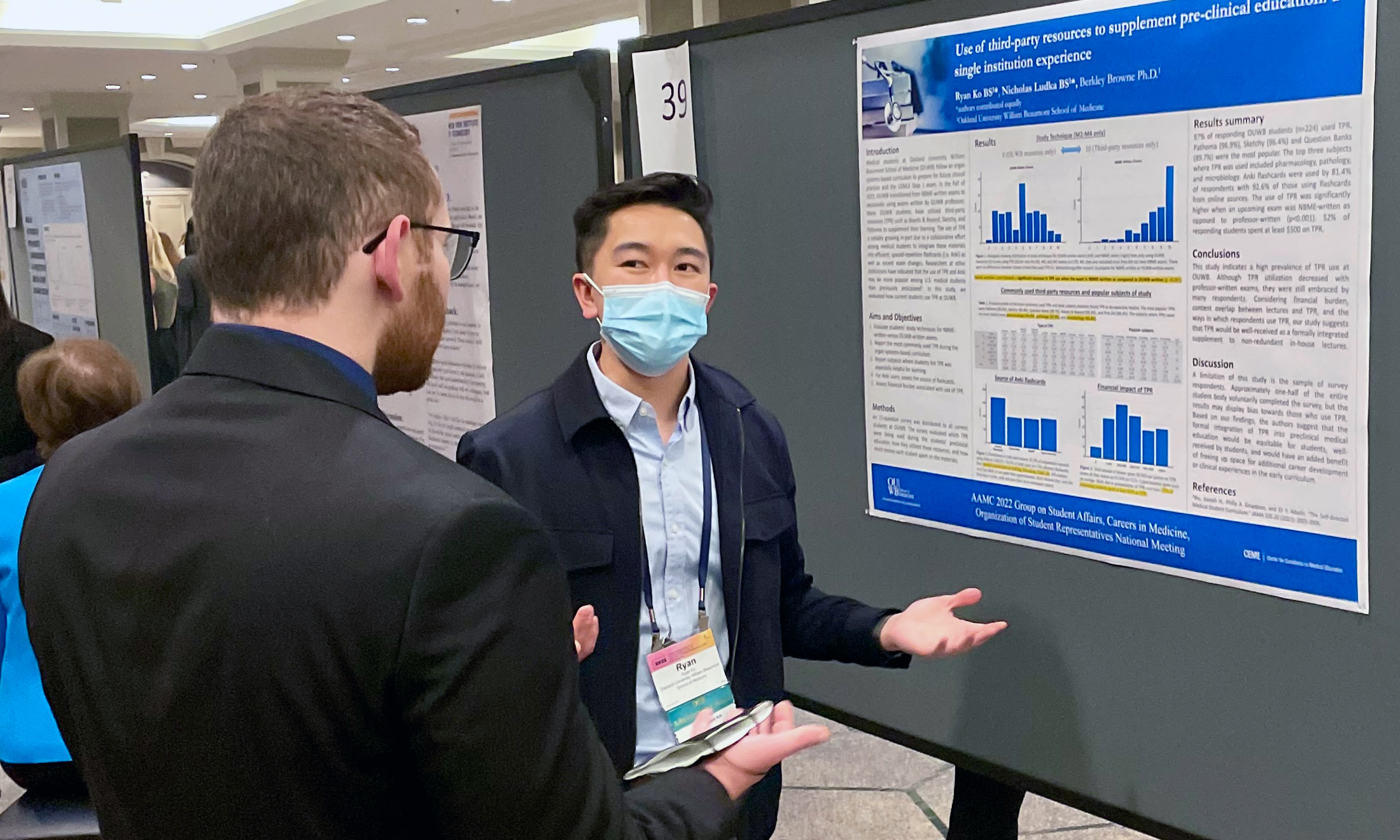
 July 06, 2022
July 06, 2022
 By Andrew Dietderich
By Andrew Dietderich